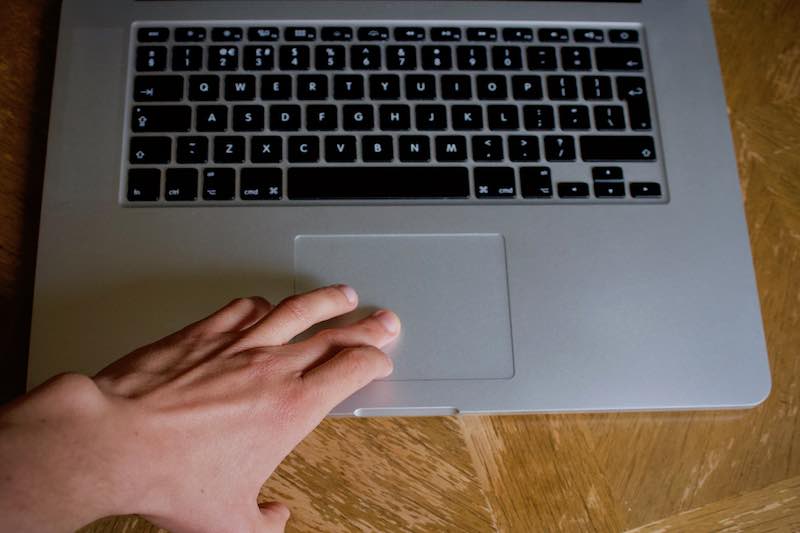In our tech-savvy world, our laptops have become indispensable tools for work, play, and staying connected. Among its crucial features, the touchpad plays a pivotal role in navigating and interacting with our digital world. However, when the touchpad on your beloved MacBook decides to play truant, it can leave you feeling stranded and frustrated.

Image: www.youtube.com
Fear not, dear reader, for in this comprehensive guide, we will guide you through an array of proven solutions to revive your stubborn touchpad. From simple troubleshooting steps to more in-depth fixes, we’ve got you covered. Trust me; your touchpad’s redemption is just a few clicks away!
A Journey into the Tangled Web of Touchpad Troubles
Before we dive into the magical world of touchpad resurrection, it’s essential to understand the potential culprits behind its malfunction. Identifying the root cause will not only streamline the repair process but also prevent the dreaded déjà vu of future touchpad meltdowns.
Your touchpad’s misbehavior could stem from software glitches, faulty hardware, or even a buildup of dirt and grime. Minor software hiccups can often be resolved with a simple reboot or software update, while hardware issues might require a more hands-on approach.
But fret not, gentle reader! With our trusty troubleshooting toolkit, we will methodically eliminate each potential culprit until your MacBook’s touchpad sings the sweet symphony of smooth navigation once more.
Troubleshooting Your Touchpad Woes: A Step-by-Step Overture
-
Reboot and Reset: Kick things off with a classic reboot of your MacBook. This simple yet effective maneuver has a knack for resolving many temporary software glitches that can affect your touchpad. Alternatively, try resetting the System Management Controller (SMC), which manages low-level hardware functions.
-
Software Update Rhapsody: Your touchpad’s functionality might be held hostage by outdated software. Ensure your macOS is up to date by navigating to ‘System Preferences’ > ‘Software Update’ and embracing any available updates.
-
Cleanliness Crusade: Grime, crumbs, and dust bunnies can wreak havoc on your touchpad’s sensitivity. Gently use a soft, slightly damp cloth to wipe away any surface dirt, paying close attention to the edges of the touchpad. Avoid using harsh chemicals or abrasive materials that might damage the delicate surface.
-
Bluetooth Blues: If you’re rocking an external Bluetooth mouse or trackpad, interference can disrupt your touchpad’s performance. Disable Bluetooth temporarily to rule out any wireless conflicts.
-
Activity Monitor Shenanigans: Sometimes, rogue processes can overburden your system, causing your touchpad to lag or freeze. Open the ‘Activity Monitor’ utility (Applications > Utilities) and search for any unusually high CPU or memory usage. If you detect any culprits, quit those processes and witness the touchpad’s newfound freedom.
Advanced Techniques: Unlocking Your Inner Touchpad Whisperer
If the basic troubleshooting steps haven’t awakened your touchpad from its slumber, it’s time to venture into the realm of more advanced maneuvers. Be warned, these steps require a bit of technical finesse, so proceed with caution.
- Reset NVRAM Rhapsody: The Non-Volatile Random-Access Memory (NVRAM) stores certain system settings, including those related to the touchpad. Resetting NVRAM can sometimes resolve touchpad issues. Here’s how:
• Shut down your MacBook.
• Press and hold the ‘Command’, ‘Option’, ‘P’, and ‘R’ keys simultaneously.
• Power on your MacBook while continuing to hold the keys.
• Release the keys after about 20 seconds or when you hear the startup chime a second time.
- SMC Reset Redo: If the SMC reset you performed earlier didn’t do the trick, give it another go with a slightly different approach:
• Shut down your MacBook.
• Connect the MagSafe charger (or USB-C charger for newer models).
• Press and hold ‘Shift’, ‘Control’, and ‘Option’ on the left side of the built-in keyboard.
• While holding those keys, press and hold the power button.
• Keep all four keys pressed for 10 seconds.
• Release all keys and power on your MacBook.
- Hardware Diagnostics Symphony: Unleash the power of your MacBook’s built-in hardware diagnostics tool:
• Shut down your MacBook.
• Turn it on and immediately press and hold the ‘D’ key.
• Keep holding ‘D’ until you see a screen with diagnostic options.
• Run the diagnostics test, which might take several minutes.
If the diagnostics reveal any hardware issues related to the touchpad, you might need to seek professional repairs.

Image: telegra.ph
How To Fix A Stuck Touchpad On Macbook
Parting Words: A Farewell Blessing for Your Touchpad
Dear reader, as we reach the end of our touchpad troubleshooting journey, remember that with persistence and a touch of tech-savvy, you can restore your MacBook’s touchpad to its former glory. Embrace these troubleshooting techniques, and let your fingers dance across a responsive and seamless touchpad once more. If, however, the issue persists, don’t hesitate to consult a qualified repair technician for further assistance.